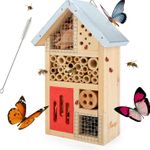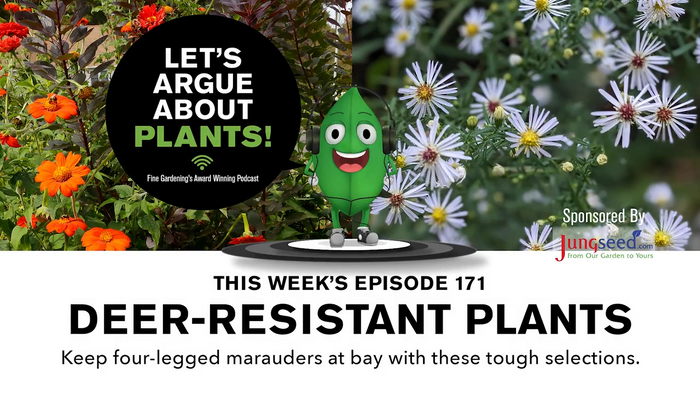
Yesterday, beautiful little seedlings were just poking their heads up in my garden. This morning, tragedy! Some seedlings are missing altogether, and others have been beheaded, their fragile tops cut off and lying neatly beside them.
Cutworms are responsible for this evil deed. You may be able to find one taking a daytime nap by probing the earth with your fingers or, better yet, a pencil in a 1-foot circle around the seedling stem. Of course, you can kill any cutworms you find by tossing them on a hard surface and stepping on them, but that won’t help the seedlings that have lost their heads. The only immediate solution is to reseed or transplant new seedlings to replace those that were demolished.
They eat at night and sleep by day. Once you’ve experienced their damage, you’ll have no trouble understanding why the larvae of certain night-flying moths are called “cut” worms. The term is applied to about 200 species with slightly different eating habits. Most are gray-brown caterpillars, with the characteristic habit of curling up in the shape of the letter C when disturbed.
Cutworms sleep by day just under the soil surface, or occasionally in moist debris on the surface. Some make tunnels and feed just below or above the soil surface. These cutworms are the ones most likely to chop down seedlings. Other types remain in the soil and feed on underground stems and roots, causing plants to wilt. Some of these caterpillars are climbers that eat leaves or buds of larger plants or trees. Regardless of the parts of plants they are likely to eat, all of these cutworms come out at night to do their devastating damage.
Grass and weeds harbor eggs. The adult moths of the many cutworm species share a similar life cycle. In the spring, they are attracted to grasses and weeds to lay their eggs. They prefer weeds with multiple stems and many basal leaves that produce low, dense growth. So the worst cutworm infestations in the vegetable garden generally occur where grassy areas have recently been broken up to create a new planting bed. When the young caterpillars hatch, they begin feeding on the nearest vegetation, slowly expanding their range as they grow.
Consequently, if you’re planning to enlarge your garden in early spring by cultivating a nearby grassy or weedy area, do it at least two to three weeks before any vegetable seeds are planted. If the area is cultivated too soon before vegetable planting, cutworm larvae already hatched may migrate to the vegetables in search of food.
In the fall, you can begin a program to reduce cutworm damage the next spring. Thickly mulch the garden area. Compost, weeds, hay, leaves, or even newspaper can make a good, smothering mulch. Monitor the area in late winter and spring when the ground warms sufficiently for plant growth. Keep it as free of weeds and grass as possible. Remove any vegetation that might tempt cutworm moths to lay their eggs nearby, or continue adding mulches to deter weed growth.
An alternative to toxic insecticides. If mulching is not an option in your garden, you can treat it with Bacillus thuringiensis var. kurstaki. Btk is a naturally occurring bacterial insecticide specific to caterpillars and harmless to humans and the natural enemies of the pests. There are many species of Bt, as well as many varieties or strains within a single species. So kurstaki is one variety of B. thuringiensis. Products with this active ingredient are available under various trade names. Follow package directions.
Since it’s hard to determine when cutworm moth eggs are starting to hatch, spray Btk at weekly intervals while your seedlings are emerging and still small. Repeat applications are necessary because Btk dissipates quickly in the environment and may wash off plants with rain or irrigation. The most important thing to understand about Btk is that it has to be eaten by the cutworms to be effective. It will not kill the cutworms through contact alone, so you’ll have to tolerate a little plant damage while the tiny worms ingest the poison. Also, Btk is ineffective against cutworms that feed below the soil surface.
Btk is a living product, so protect it from moisture and high temperatures during storage. Try to purchase it from a store with enough patronage to suggest fairly rapid stock turnover.
Give seedlings a head start, then protect them with a barrier. Not all vegetables lend themselves to being raised in containers or flats and then transplanted. But those that do, such as lettuce, cabbage, and broccoli, can be protected during their most vulnerable stage. Just keep them in their containers in a sunny, protected indoor or outdoor location until they are 4 to 5 inches tall and have several true leaves. At this point, transplant the sturdy seedlings into the ground, and surround each with a protective barrier.
Barriers can be made by cutting off both ends of a quart milk carton with a sharp knife. Flatten the carton and, using scissors, cut it in thirds. When sunk into the ground an inch deep surrounding transplants, each third will make an excellent barrier to cutworms. Barriers can also be made from frozen juice containers cut in half, or improvised from other materials like cardboard strips.
Insect-eating nematodes on the attack. Two species of insect-attacking nematodes (minute round worms), Heterorhabditis bacteriophora and Steinernema carpocapsae, otherwise harmless in the garden, are known to eat cutworms. Both are available as commercial products from nurseries and mail-order suppliers.
Keep in mind, however, that nematodes work best in loamy or sandy soils. They are also susceptible to drying out. So apply them to a moist soil surface in the late afternoon, and water them in thoroughly. They will remain viable in the soil longer if there are some alternate sources of food for them. Ensure this by incorporating compost into the soil beforehand. Composted organic material usually attracts fungus gnats, and their larvae serve as food for the nematodes in between any cutworm meals.
Natural enemies abound. If they didn’t have the annoying habit of chopping down seedlings, we might pity cutworms, for they have many natural enemies. Most are too small to notice, like parasitic braconid wasps, tachinid flies, nematodes, bacteria, viruses, fungi, and protozoans. Others are more visible: meadowlarks, blackbirds, toads, moles, and shrews.
The best approach to preserving these natural enemies is to avoid the use of poisons, especially those like Sevin that contain the active ingredient carbaryl, which is toxic to many tiny, parasitic, natural enemies. Include flowering plants in the garden to provide nectar and pollen for the beneficials—food to tide them over until their insect prey hatches.
Keep your garden diverse in plants and as unpolluted as you can. It’s worthwhile to make the extra effort that alternative pest management methods sometimes require.
This article originally appeared in Kitchen Gardener #9 (June 1997).
Fine Gardening Recommended Products

Berry & Bird Rabbiting Spade, Trenching Shovel
Fine Gardening receives a commission for items purchased through links on this site, including Amazon Associates and other affiliate advertising programs.

Niteangel Natural Wooden Insect Hotel, Garden Insect House for Ladybugs, lacewings, Butterfly, Bee, Bug
Fine Gardening receives a commission for items purchased through links on this site, including Amazon Associates and other affiliate advertising programs.

A.M. Leonard Deluxe Soil Knife & Leather Sheath Combo
Fine Gardening receives a commission for items purchased through links on this site, including Amazon Associates and other affiliate advertising programs.


















Comments
Log in or create an account to post a comment.
Sign up Log in